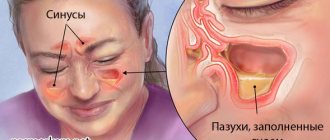Dysphonia is a concept denoting a violation of vocal function, which is manifested by hoarseness, nasal sound, weakness and hoarseness. The complete loss of voice sonority is called aphonia. With voicelessness, whispered speech persists, and moments of a rattling voice appear.
Dysphonia occurs when the vocal apparatus is not functioning properly. Patients experience a partial change in the pitch, timbre or strength of the voice. This pathological condition occurs at any age and is highly treatable. The inability to speak in a normal voice occurs for various reasons. Among them: colds, excessive strain on the vocal cords, stress and anxiety.
Dysphonia and aphonia are symptoms of various somatic and psychoneurological diseases: diphtheria croup, acute laryngitis, catarrh, laryngeal tumors, neuroses. All patients with speech impairment should be carefully examined. Treatment of aphonia and dysphonia depends on the causes of these ailments. Correct and timely therapy ensures a quick return of the voice to its original tone.
Classification
By origin, dysphonia can be organic and functional. Organic occurs against the background of inflammatory diseases of the larynx, and functional - against the background of various neurotic changes. After the extinction of pathological processes in the body, dysphonia disappears.
Functional dysphonia is divided into 3 types: hypotonic, hypertonic, hypo-hypertonic.
Pathogenetic classification of dysphonia:
- Mutational dysphonia occurs in boys of puberty and is characterized by a sharp transition of the voice from a high tone to a low one.
- Psychogenic dysphonia is caused by severe psycho-emotional stress.
- Spasmodic dysphonia occurs with discoordinated hyperfunction of the respiratory muscles.
Based on duration, dysphonia is divided into short-term and persistent.
Types of aphonia:
- Paralytic aphonia develops with dysfunction of the lower laryngeal nerve, which is injured during operations on the neck organs or is affected by infectious intoxication. The cause of the pathology is also chronic diseases of the nervous system - syringomyelia, syringobulbia.
- True aphonia occurs when the larynx is damaged, preventing proper closure and sufficient vibration of the ligaments. Acute or chronic laryngitis, paralysis of the laryngeal muscles, neoplasms are the causes of such changes.
- Functional aphonia is the absence of voice caused by functional insufficiency of the vocal muscles of central origin. The development of pathology is facilitated by the influence of stress and mental trauma on the labile nervous system of patients.
- Spasmodic aphonia occurs when spasmodic contraction of the laryngeal muscles narrows the glottis. Convulsions of the laryngeal muscles make the gap so narrow that patients completely lose their voice.
Treatment of dysphonia
Treatment of dysphonia at the highest level is carried out by specialist doctors from the pediatric treatment and diagnostic hospital. Treatment of dysphonia begins with the doctor identifying the cause that triggered the development of dysphonia. The doctor begins with clarification of complaints and a diagnostic physical examination. After establishing an accurate diagnosis, you can begin the treatment itself. It should be clarified that our children's treatment and diagnostic center is equipped with modern medical equipment, which allows us to diagnose and treat dysphonia quickly, efficiently, painlessly and effectively.
Treatment for dysphonia is different and depends on the very cause that led to the development of the disease. If dysphonia is of an organic nature, then treatment involves identifying the source of inflammation (or another organic source) and its rehabilitation. After the elimination of organic pathology, dysphonia disappears. If a doctor has diagnosed functional dysphonia, then the factor that led to the onset of the disease should be eliminated. In this case, you should correct neurological and mental defects (if any), maintain a voice regime, and undergo a course of medication and physiotherapeutic treatment. If necessary, surgical intervention is performed (for example, to eliminate a foreign body from the respiratory tract).
Otolaryngologists of our center
Etiology and pathogenesis
The causes of dysphonia and aphonia are divided into two large groups: congenital and acquired.
- The main cause of vocal cord dysphonia is a congenital malformation of the larynx. In patients with a damaged structure of cartilaginous tissue, the epiglottis sags, the entrance to the larynx is not completely torn off, which is manifested by abrupt and noisy inhalation. This is the so-called congenital stridor or laryngomalacia, which develops during embryogenesis after the appearance of chondrification centers.
- Congenital subglottic stenosis of the larynx is a common cause of narrowing of the airways in childhood, manifested by dysphonia or aphonia. Complete or partial underdevelopment of the vocal folds in children is accompanied by shortness of breath, wheezing, and cough.
- Laryngeal angioma is a vascular pathology resulting from impaired embryonic development of the circulatory and lymphatic systems. The disease develops under the influence of infectious agents, traumatic injury, and hormonal imbalance during the gestational period.
Diseases that cause dysphonia:
- Allergy,
- Inflammation of various parts of the respiratory tract,
- Benign neoplasms of the larynx,
- Neurological diseases
- Asthenic condition,
- Hormonal disbalance,
- Myasthenia gravis,
- Diseases of internal organs in the stage of decompensation,
- Endocrinopathy,
- Hematological diseases,
- Osteochondrosis of the cervical spine,
- Injuries to the vocal apparatus,
- Acute infectious diseases - influenza, ARVI, sore throat.
Factors that provoke dysphonia:
- Stressful conditions,
- Forced long silence
- Obstruction of the airways by foreign bodies,
- Long-term use of anabolic steroids,
- Professional factor associated with constant tension of the vocal cords,
- Psychological factors
- Operations on the neck organs,
- Drug treatment
- Voice overstrain in a company or noisy room,
- Features of the microclimate of the room - dampness, dust, cold or heat,
- Excessive consumption of alcoholic beverages,
- Irritation of the larynx due to chemical burns,
- Smoking,
- Elderly age,
- Frequent and prolonged squealing and screaming in children,
- Occupational hazards - dust or gas contamination of the production premises.
Functional dysphonia often leads to the formation of organic pathology of the larynx - atrophic laryngitis. Regular exposure to triggers usually has an unfavorable outcome. Various pathologies develop in the throat - tumors, polyps, hematomas. Long-term vocal strain often results in chronic laryngitis, and excessive alcohol consumption contributes to increased blood flow to the pharynx, hyperemia and swelling of the laryngeal mucosa.
In children, dysphonia develops as a result of frequent and loud screaming and singing in a high sound range. The voice of babies becomes hoarse when the adenoids become enlarged and inflamed. Impaired nasal breathing allows cold and unpurified air to enter the larynx, which leads to frequent laryngitis and dysphonia.
Symptoms
In patients with dysphonia, the voice becomes hoarse and its timbre or tone changes. Children develop stridor breathing - whistling and noisy, caused by turbulent air flow in the respiratory tract. Stridor is an important symptom of significant laryngeal obstruction.
Dysphonia is accompanied by constant or periodic hoarseness and fatigue of the voice. In patients with laryngitis, the voice becomes weak and hoarse, a dry, painful cough occurs, and speech becomes difficult. As the tumor grows, the voice disappears, leaving only whispered speech. Aphonia develops.
- The hypotonic form is manifested by hyperemia of the vocal folds, the formation of an oval or triangular glottis, and a dull, weak and hoarse voice.
- Hypertonic dysphonia is a tonic muscle spasm of the larynx and convulsive contraction of tense vocal folds, accompanied by hoarseness and sore throat.
- Symptoms of hypo-hypertonic dysphonia are: dry mouth, tremulous, vibrating voice, shortness of breath.
- Spasmodic dysphonia is the most severe form of pathology, which has an acute onset caused by mental trauma and prolonged vocal strain. It becomes hoarse, weak, vibrating, falsetto, trembling, breaking. The muscles of the back of the head and neck begin to ache as a result of constant spasm, and the pain in the throat intensifies when swallowing. Gradually, pain and discomfort in the throat become unbearable and require urgent treatment.
If you notice the symptoms listed above, you should contact an ENT doctor, undergo a comprehensive examination and comprehensive treatment.
Diagnostics
Diagnosis of voice dysfunction consists of interviewing and examining the patient. When collecting anamnesis, special attention is paid to the duration of the pathology, the presence of concomitant diseases and factors contributing to the development of dysphonia.
Physical and instrumental examination:
laryngoscopy
Study of the basic acoustic parameters of the voice,
- Glottography and electromyography,
- Direct or indirect laryngoscopy,
- Research of respiratory function (function of external respiration),
- Endofibrolaryngoscopy,
- Microlaryngostroboscopy,
- Tracheoscopy if necessary,
- X-ray of the larynx,
- CT,
- Clinical blood and urine tests,
- Bacteriological examination of oropharyngeal discharge,
- Biopsy for suspected cancer.
Diagnosis of aphonia
The following methods are used to diagnose aphonia:
— general examination, analysis of medical history; — analysis of a smear from the oropharyngeal mucosa (if signs of infection are found during examination); - laryngoscopy.
If it is necessary to exclude a tumor, then the following is prescribed:
Read also Leptospirosis - symptoms, causes and treatment of leptospirosis
- Ultrasound; - X-ray examination; — MRI (magnetic resonance imaging); — computed tomography (CT); - biopsy.
Treatment
Treatment of dysphonia is complex, aimed at eliminating the disease that caused it.
Medications
Drug therapy is carried out against the background of voice mode and orthophonic treatment.
- Tincture of lemongrass, ginseng, other stimulants and vitamins are drugs for the treatment of hypotonic dysphonia, improving microcirculation of the vocal folds and restoring normal voice.
- Psychotropic drugs, neuroleptics, tranquilizers, antidepressants, antispasmodics are indicated for the treatment of hyperkinetic dysphonia.
- For the treatment of spasmodic dysphonia, patients are prescribed “Gamma-aminobutyric acid”, “Aminalon”.
- Multivitamins, ATP, Strychnine, Proserin, sedatives and tranquilizers are prescribed to patients with various forms of dysphonia.
- Vitamin complexes and vascular preparations are indicated to improve organ functions and rapid recovery of the entire body.
- If the cause of dysphonia is an acute viral infection, patients are prescribed voice mode, plenty of warm drinks, antiviral drugs, and immunomodulators. For inflammatory laryngeal processes, antibiotics, gargling, and inhalations are used.
Non-drug treatments for dysphonia
Non-drug treatment of dysphonia includes the following methods:
- Phonopedic exercises for rehabilitation of vocal function,
- Neck massage,
- Psychotherapeutic influence,
- Speech therapy and voice exercises,
- Balneotherapy,
- Hydrotherapy,
- Acupuncture,
- Electroson,
- Physiotherapy – electrical stimulation of the laryngeal muscles with diadynamic current, galvanization, darsonvalization, amplipulse, electrophoresis.
Laryngoplasty, implant surgery, tracheostomy and thyroplasty are operations performed for persistent dysphonia that is not amenable to conservative treatment. To restore voice function, surgeons excise scars from the laryngeal ligaments and remove tumors.
ethnoscience
To treat diseases manifested by dysphonia, traditional medicine recipes are widely used. Vodka compress and mustard plasters lead to vasodilation, blood flow to the affected area, reducing signs of inflammation and eliminating corresponding symptoms.
It is useful for patients with dysphonia to drink carrot, dandelion, turnip, and cabbage juice daily. Raw chicken eggs and garlic cloves boiled until soft improve the condition of the vocal cords. Inhalation of medicinal herbal decoctions into the body ensures their rapid therapeutic effect. It is useful to take a decoction of flax seeds with apple and honey, gargle with infusion of marshmallow and lavender, fennel and milk.
Treatment of aphonia with folk remedies
Before using folk remedies to restore your voice, be sure to consult your doctor!
Garlic. Take boiled garlic cloves every day. Simply boil the cloves until soft and the edges are removed.
Eggs. Drink 4 quail or 2 chicken eggs (homemade) every morning.
Cabbage juice. Take freshly squeezed white cabbage juice 3 times a day, 0.5 cups.
Horseradish with honey. Mix horseradish and honey in equal parts. Take 1 teaspoon every hour.
Flax seeds with apple and honey. Take 1 tbsp. a spoonful of flax seeds, the peel of 1 apple and 2 teaspoons of honey. Pour the mixture with 300 ml of water and cook for 10 minutes. Drink the decoction warm 10 minutes before meals 3 times a day.
Marshmallow and lavender. Take 2 tbsp. spoons of marshmallow and lavender flowers and pour 600 ml of boiling water. Let the product sit for 15-20 minutes. Use warm to gargle, and drink a little throughout the day.
Read also Phlegmon - symptoms, causes, types and treatment of phlegmon
Fennel with milk. If your voice is hoarse, take 10 g of fennel fruit, pour in 1 liter of boiling milk, leave for 10 minutes, add a little honey. Drink very hot and slowly, 2-3 glasses during the day and 1 glass before bed.
Mullein. Boil 30 g of dried mullein flowers for 10 minutes in 0.5 liters of water and strain. Gargle while warm.
Potato. Peel the potatoes and boil in a small amount of water. Drain the water, mash the potatoes and, covering yourself over the potatoes, inhale the steam with your mouth wide open and exhale through your nose.
Young raspberry shoots. 4 tbsp. Add 2 cups of water to spoons of dried raspberry shoots and simmer over low heat for 15 minutes. Cover and wrap the broth and let stand for 30 minutes. Strain through 1 layer of cheesecloth and bring to a boil. Take a comfortable position and lean over the pan, covering the top. Inhale the steam through your mouth, exhale through your nose.
Prevention
Preventive measures for dysphonia include:
- Early detection and proper treatment of infectious diseases of the ENT organs,
- Silent mode
- Prevention of acute respiratory infections and acute respiratory viral infections,
- Correction of vocal load in singers, lecturers, speakers,
- Ensuring nasal breathing in winter,
- Fighting bad habits
- Strengthening the nervous system,
- Hardening,
- Maintaining a healthy lifestyle,
- Proper nutrition,
- Maintaining an optimal work and rest schedule,
- Boosting immunity.
When the first signs of voice disorders appear, you should immediately consult a doctor. This significantly reduces the risk of developing severe consequences in aphonia. Pathological conditions manifested by hoarseness or complete absence of voice respond well to treatment. Voice function quickly returns to normal.










